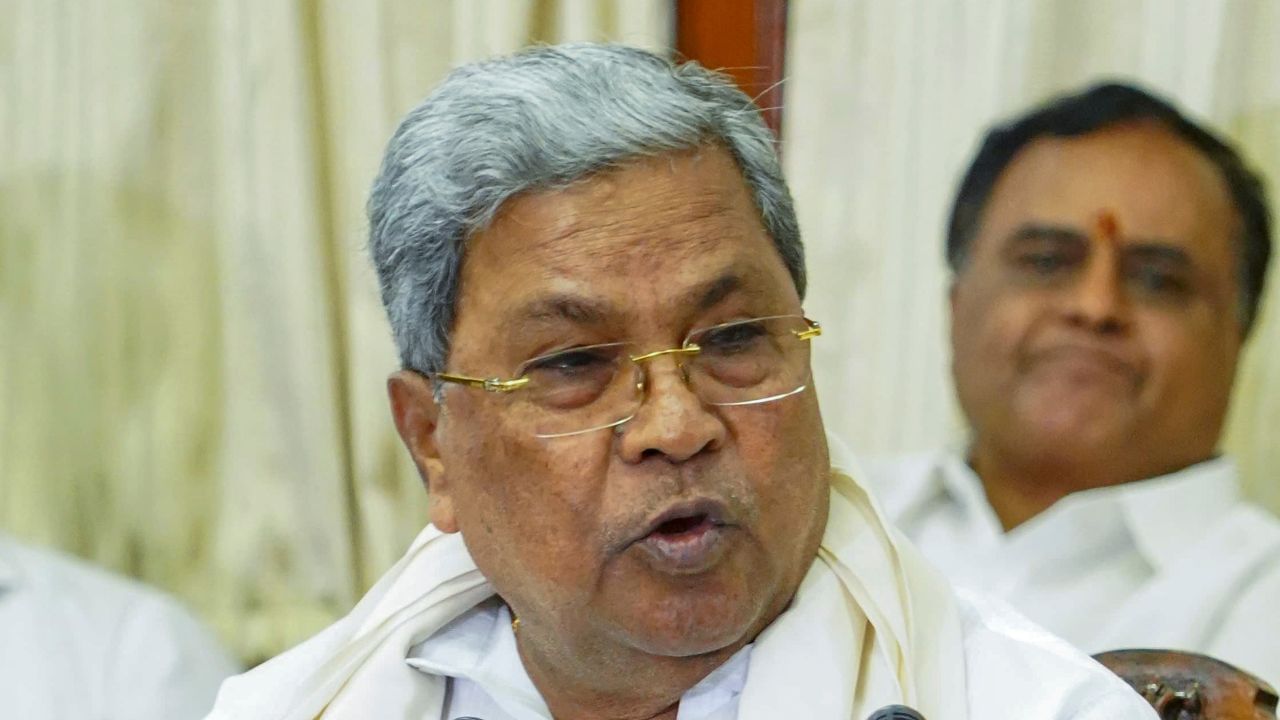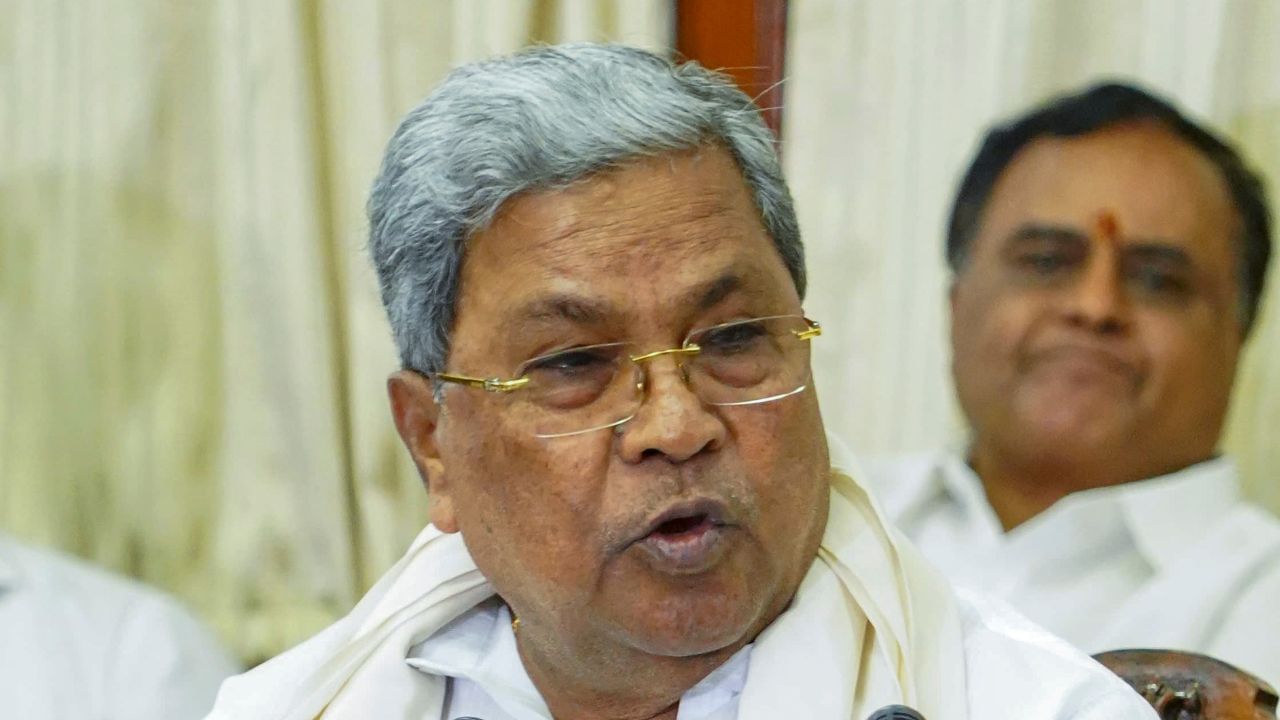New Delhi: It was a déjà vu moment for Congress leaders last week when they came across a datasheet shared by the Centre in the Lok Sabha on per capita Net State Domestic Product for 2024–25. Karnataka, currently under Congress rule, has achieved what many other states can only aspire to: pushing its per capita Net State Domestic Product past the ₹2 lakh mark. A decade ago, it was just over ₹1 lakh. This figure now stands well above the national average of ₹1,14,710 for 2024-25, up 57.6% from ₹72,805 ten years ago.
Chief Minister Siddaramaiah, along with AICC general secretaries Randeep Singh Surjewala and Jairam Ramesh, gleefully shared the news on social media platform X, claiming that the five guarantees implemented by the Karnataka Congress government had driven this economic turnaround. Their confidence isn’t without merit. Through the four schemes, the government has pumped nearly a lakh crore into the state’s economy — a record by any measure. That deserves recognition.
However, whenever macroeconomic data is released, politicians are the first to spin it for advantage of narratives, well before economists analyse it in depth. So far, not a single rigorous analysis has emerged to either validate or challenge the Congress party’s claims. Against this backdrop, I made a deliberate attempt to spark a constructive debate by using alternative metrics — to highlight that macroeconomic numbers don’t always reflect the real, ground-level financial condition of people.
Data Sanctity
Since 2014, the Congress party has consistently dismissed economic data released by the NDA government, often accusing it of fudging numbers or drawing conclusions from flawed premises. Given that history, how can the same party now selectively embrace data highlighting Karnataka’s economic performance — especially when the figures come from the very same source? If most other government-released data is allegedly unreliable, why should this set of data be accepted as credible? And based solely on this data, can one conclusively say that Karnataka is doing an exceptional job?
Role of Mudra loans and PM-Kisan Samman Nidhi
It’s worth noting that long before the Congress took office in Karnataka in 2023, central government schemes had already been injecting money into the hands of ordinary citizens across India including Karnataka. Take, for example, the Mudra loan scheme and the PM-Kisan Samman Nidhi Yojana — both Union government initiatives aimed at empowering farmers, economically weaker sections and small entrepreneurs.
PIB data shows that over 33 lakh beneficiaries in Karnataka received loans of up to ₹50,000 during for 2021–22 to start or grow micro-businesses such as pushcart vending. This category alone accounted for over ₹9,000 crore disbursed during 21-22. In the same fiscal year, two additional Mudra loan categories — ₹50,000 to ₹5 lakh and ₹5 lakh to ₹10 lakh — saw more than 8 lakh people eceiving ₹12,700 crore in the first category, and over 87,000 borrowers receiving ₹5,900 crore in the second. Altogether, more than ₹28,300 crore was disbursed under Mudra Yojana in Karnataka during 2021–22, as the country was still recovering from the pandemic then. These schemes continued to put money in the hands of people in subsequent years and therefore, contributed to the rise in the state’s per capita Net State Domestic Product beyond ₹2 lakh.
Similarly, the PM-Kisan Samman Nidhi Yojana, launched in 2019, provides ₹12,000 annually to enrolled farmers via direct benefit transfers. Over 9 crore farmers nationwide benefit from the scheme, including more than 48 lakh in Karnataka. Like the Congress government’s own guarantee schemes, this central initiative provides steady support to farmers. It would be unfair to ignore the role these central schemes might have played in raising incomes and improving Karnataka’s economic metrics.
Bleak state of affairs—Why?
Let’s start with the agrarian sector. Between May 2024 and mid-2025, Karnataka recorded 981 farmer deaths, of which 825 were officially categorised as suicides. The state government has provided compensation to 807 families. Haveri district topped the list with 128 deaths, followed by Chief Minister Siddaramaiah’s home district, Mysuru, with 73. Dharwad (72) and Belagavi (71) ranked third and fourth. In contrast, districts like Bengaluru Urban, Bengaluru Rural, Udupi, and Kolar reported zero farmer suicides.
Revenue Minister Krishna Byre Gowda and Agriculture Marketing and Sugar Minister Shivanand Patil claimed that the number of suicides has declined due to the implementation of the Congress government’s guarantee schemes. According to Deccan Herald, the ministers pointed to timely disbursal of agricultural loans and action against private moneylenders as contributing factors. The reality is like Maharashtra, Karnataka has failed to flatten the curve on farmer suicides.
Yet, the challenges persist. Weather uncertainties and market fluctuations continue to impact farmers. A recent example is from Kolar, where mango farmers enjoyed a bumper harvest this monsoon, only to find no buyers by June. Some were forced to dump their produce on the streets. Such incidents expose the gap between macroeconomic indicators like per capita Net State Domestic Product (NSDP) and the lived reality in rural Karnataka.
Rural migration and the hidden crisis
Another concerning trend is the migration of Below Poverty Line (BPL) families from rural areas. There’s little state-level data on how many people migrate to cities for work every year, but a joint study by agricultural scientists from three universities sheds light on the issue. The study, titled Volume and Status of Agricultural Labourers’ Migration in Bidar District, Karnataka, India, was published in 2023 in the Journal of Experimental Agriculture International. It surveyed 240 families across Bidar, Bhalki, and Basavakalyan taluks in Bidar district.
The findings were telling: a) Low per capita landholding was a primary driver of migration b) Larger family sizes saw more members migrate c) Surprisingly, educated individuals were more likely to migrate than the illiterate, driven by underemployment. The study concluded that for many rural families, migration of one of the family members is essential to maintain a reasonable income level.
With no comprehensive state-level migration data available, it’s hard to quantify the full impact. However, the Bidar study highlights the vulnerability of small and marginal farmers, whose landholdings are often too meager to sustain their livelihoods. This contrasts sharply with the upbeat narrative around rising per capita NSDP. On paper, Karnataka may be surging ahead — but on the ground, many rural families are struggling to survive.
BPL cards: A reality check
Another telling metric is the number of BPL families in the state. Out of Karnataka’s 6.5 crore population, over 1.25 crore families — nearly 5 crore people — hold BPL cards. This is a staggering indicator of the state’s continuing poverty.
Recently, Food and Civil Supplies Minister K.H. Muniyappa revealed that 2.5 lakh BPL applications are pending. He emphasized that the state now uses a more stringent vetting process: families with a four-wheeler, an income tax assessee, or a government employee are disqualified. Food inspectors conduct field visits to verify claims of economic hardship.
Despite these checks, the sheer volume of BPL beneficiaries reveals a deeper truth — rising macroeconomic numbers do not necessarily mean a better quality of life for all, especially in rural and economically fragile regions.
Karnataka: Developed or still underdeveloped
It’s not easy to determine whether Karnataka is truly on the path to becoming a developed state — or if it has already arrived there. The political class is sharply divided on the issue, and the bureaucracy seems more interested in churning out macro-level data that conveniently supports the ruling party, rather than uncovering ground realities.
While it’s unclear which sections of society have benefitted most from schemes like the Mudra loan program, the five Congress guarantees, or the PM-Kisan Yojana, there’s little doubt that these initiatives have put cash into the hands of rural residents. Yet, farmer suicides, large-scale rural-to-urban migration, and the sheer number of BPL cardholders paint a sobering picture. It’s hard to argue that the state has achieved balanced growth between the privileged and the poor.
In this context, the Siddaramaiah government’s plan to conduct a fresh socio-economic survey is both timely and necessary. If the survey genuinely aims to capture data and information related to household income, cost of living, healthcare expenses and education access and migration, it could offer critical insight into Karnataka’s true developmental status — and the widening gap between the affluent and low-income groups.
However, if the exercise is reduced to identifying caste demographics under the guise of a socio-economic study, it risks becoming yet another tool for identity (caste) politics. At this stage, the state must shift its focus from identity politics to empowerment-based metrics. Only then can we assess whether the state is progressing for all, not just on paper.

